
|
|
|
|
|
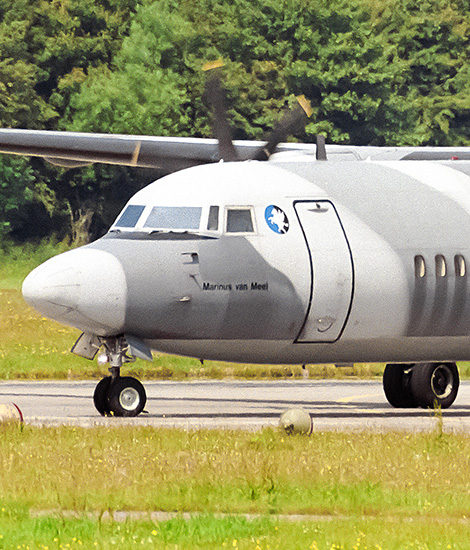
|
Squadron Rotation 346 Mira; Leeuwarden, June 25, 2001
Greek F-16s Operating at Leeuwarden; Text and Photograph's by Alex van Noye
In the period from June 18 until June 29, four Greek F-16s were participating in the local missions of the Dutch F-16s at Leeuwarden. The Greek F-16s were from the 346 Mira and were present during one of the squadron rotations with the Greek Air Force. The rotation of the host is the no 322 Squadron at Leeuwarden.
Earlier this year a Greek F-16 unit was temporarily based at Eindhoven Air Base for the tanker qualifications; now it was the turn to Leeuwarden Air Base. Leeuwarden would receive a Greek F-16 unit for two weeks. The Greek F-16s would operate from June 18 until June 29 from Leeuwarden Air Base. The Greek F-16s were part of a squadron rotation between the Dutch and the Greeks. The Greek unit which would come to the Netherlands was the no 346 Mira. The rotation would take place between the no 322 Squadron which is stationed at Leeuwarden and the 346 Mira from Greece. Squadron rotations now occur less often compared to the past. Previously, during the Cold War such rotations were held more often between NATO units in Europe. There were also often American units temporarily based in Europe to train with the European units. It is no longer obvious that units from other countries come to train at each other’s airbases. Such courses are only flown during major NATO exercises as for example during Frisian Flag in the Netherlands. Since the end of the 90s these squadron rotations became too expensive for many countries. The no 322 Squadron has practiced during this rotation together with the Greek 346 Mira in especially air defense scenarios. Both units are in their country specialized in this task. In the Netherlands, the no 322 Squadron has in addition to this task also a conventional attack role. All Dutch F-16 units operate normally in this multirole task. However, the units at Leeuwarden and Twenthe are generally specialized in the air defense role and Volkel in the offensive tasks.
The Greek 346 Mira is one of the F-16 units from the southern European country. The unit is a very young unit in Greece, because the squadron was formed in 1990. This unit was when it was founded, the second Greek unit which would receive the new Block 30 F-16. These aircraft were initially delivered directly from the Lockheed factories to the Greek Air Force. The delivery of these F-16s was made during the
|
|
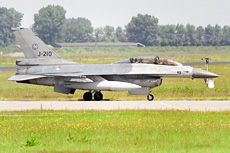
|
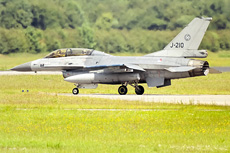
|
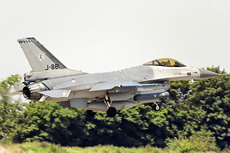
|
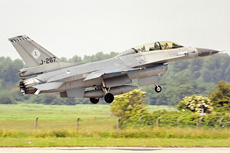
|
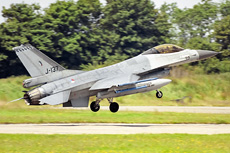
|
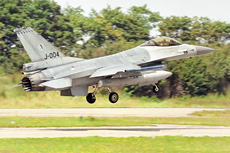
|
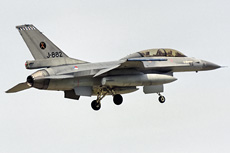
|
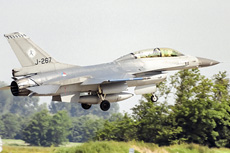
|
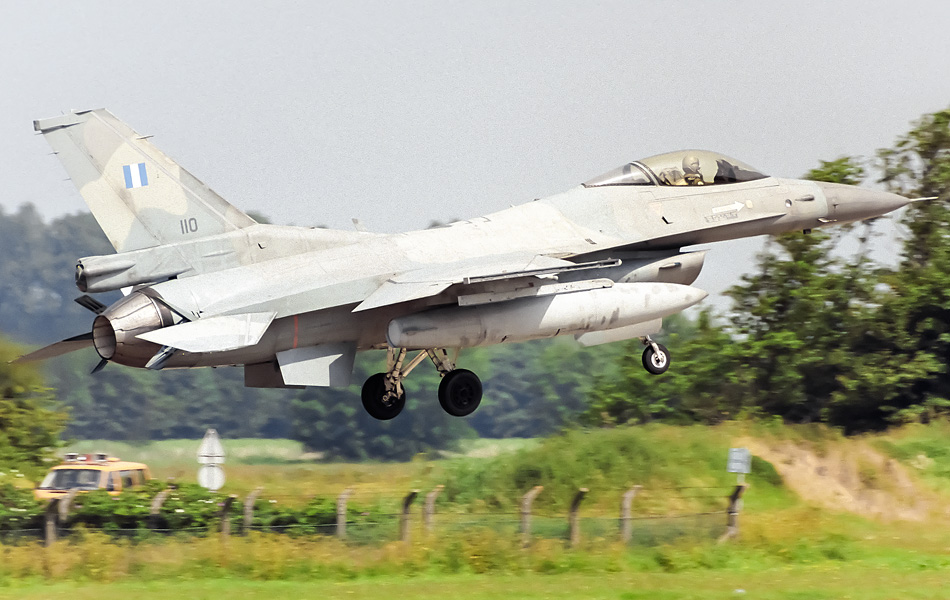
|
Peace Xenia I order. The 346 Mira was stationed on the Greek airbase Nea Anghialos where it became part of the 111 Combat Wing. This F-16 base is located on the east coast of the Greek mainland. The squadron was appointed after its establishment as a training unit for the F-16 in Greece. But it took not long before this task was given to the 330 Mira which is also stationed at the airbase Nea Anghialos. There were at this airbase increasingly F-16 units stationed and soon the airbase was too full with squadrons. In 1997, it was decided to move the 346 Mira to Larissa to make more space at Nea Anghialos. At Larissa was the 346 Mira part of the 110 Combat Wing. Moving this unit to Larissa meant for 100CW it would become a very modern unit. Until now, the unit flew only with the outdated RF-4E Phantom. The 346 Mira received at this airbase the national air defense task. The unit had to take the air defense of the central eastern part of Greece for its part. The nickname of this unit at Larissa was Jason (Iason). The unit badge consists of an eagle in the defense against a red dragon.
It would be a very hot day on June 25 at Leeuwarden Air Base. The aircraft flew over the side of Marsum because the wind came from the east. It would not take long before the first engines were started around half past ten. Both on the 322 and the 323 lines were several F-16s started. After fifteen minutes, the first aircraft appeared on the southern side of the runway. These F-16s were of the no 323 Squadron and were stationed in the shelters on the southern side of the airbase. There would be many two-seater F-16s involved during the missions today. The no 323 Squadron has the most two-seaters in use at Leeuwarden. The first two aircraft which had left were both two-seaters. Shortly after the departure of these two F-16s also four other F-16s appeared from the northern side of the runway. The formation of four aircraft consisted of two single-seat and two two-seat F-16s. All aircraft were of the no 322 Squadron and the aircraft lined up one by one across the runway. One of the two-seaters was a specially painted Tiger F-16 of the no 313 Squadron. The aircraft was probably after maintenance assigned to one of the units at Leeuwarden. Finally on the southern side of the airbase appeared the four Greek F-16s which were joined by another two Dutch F-16s. Eventually all aircraft went one by one with a lot of noise into the air. In a period of about half an hour all the airplanes took off.
The first aircraft which would return were two 322 and two 323 F-16s. The aircraft flew all four in a formation over the airbase and went one by one into the break. When the aircraft are going into the break they are leaving one by one the formation by turning away over the airfield. In this way there is enough space between the landing aircraft to land in rapid tempo. After these F-16s were landed, there were another two two-seater F-16s over the airbase which also came back for the recovery after their missions. The first two Greeks came in at Leeuwarden together with two Dutch F-16s. The Greek and Dutch F-16s were deliberately mixed together to force the pilots of both units to work together during the exercises. The second group of F-16s which arrived consisted of another two Greek and two Dutch F-16s. After the Greek F-16s had landed, there was also a Dutch Chinook inbound Leeuwarden. This helicopter was from the no 298 Squadron which is stationed at Soesterberg Air Base. During the afternoon flight, there was a Fokker F-60UTA-N of the no 334 Squadron at Eindhoven Air Base present during the missions. The transport plane is a slow moving object and it is for the F-16s therefore difficult to defend such kinds of aircraft. This is for the fighter pilots a very good exercise. Besides the Fokker 60, also a Learjet flew along as target tower during the exercise. After four o’clock were all aircraft back on the ground and the flying day at Leeuwarden was ended.
|
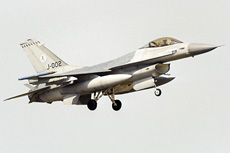
|
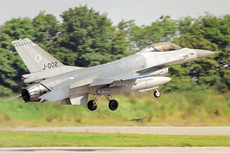
|
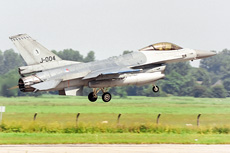
|
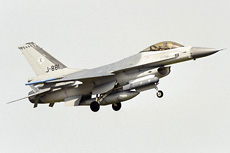
|
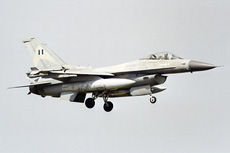
|
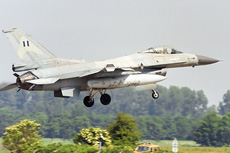
|
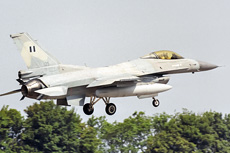
|
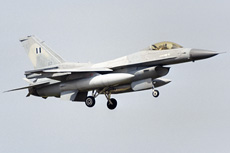
|
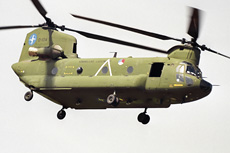
|
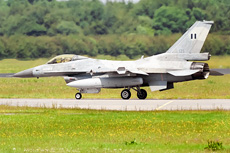
|
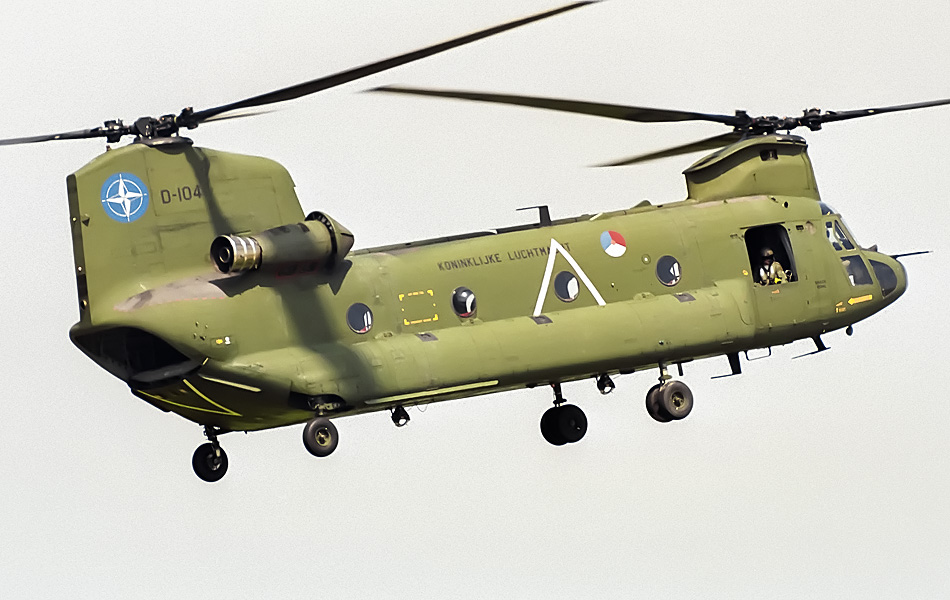
|
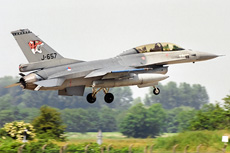
|
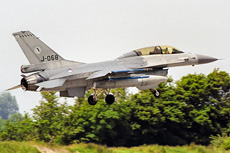
|
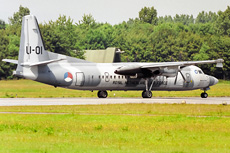
|
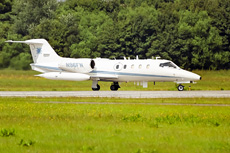
|
|
|

|







